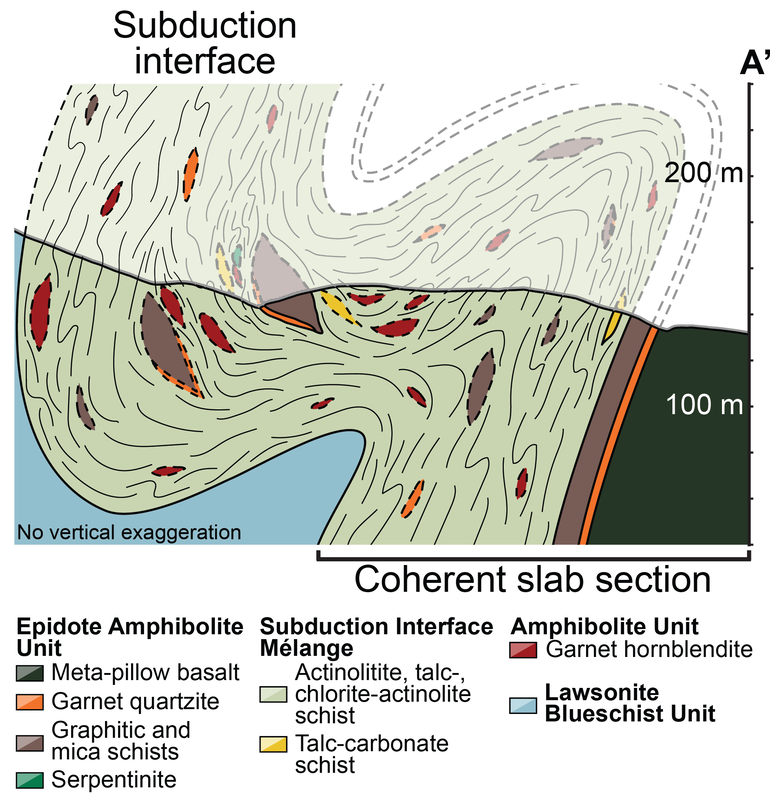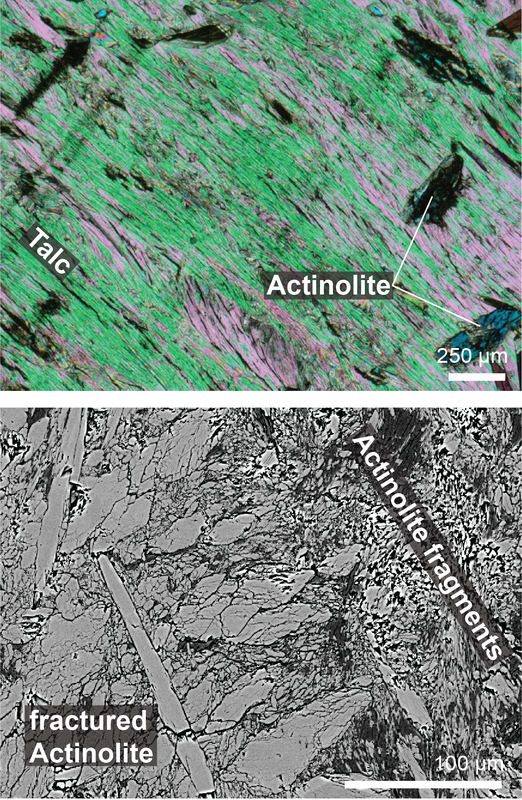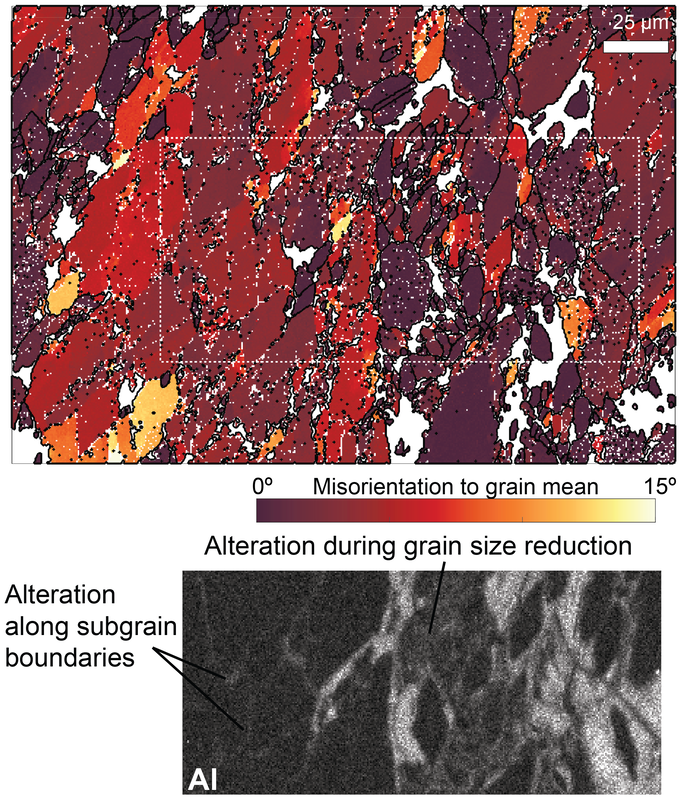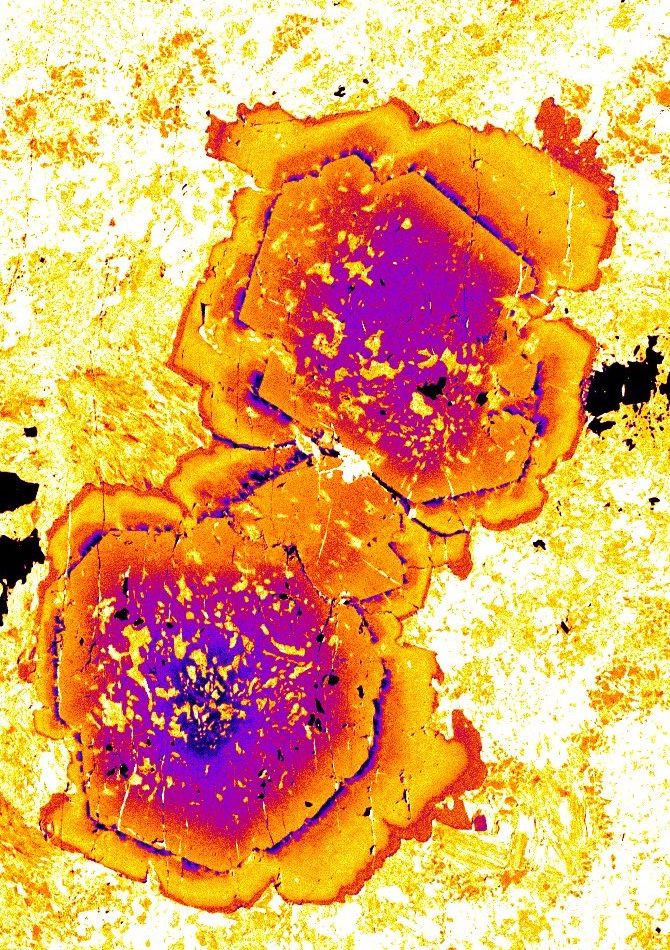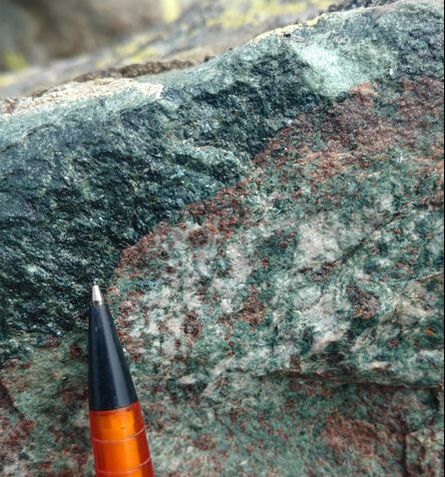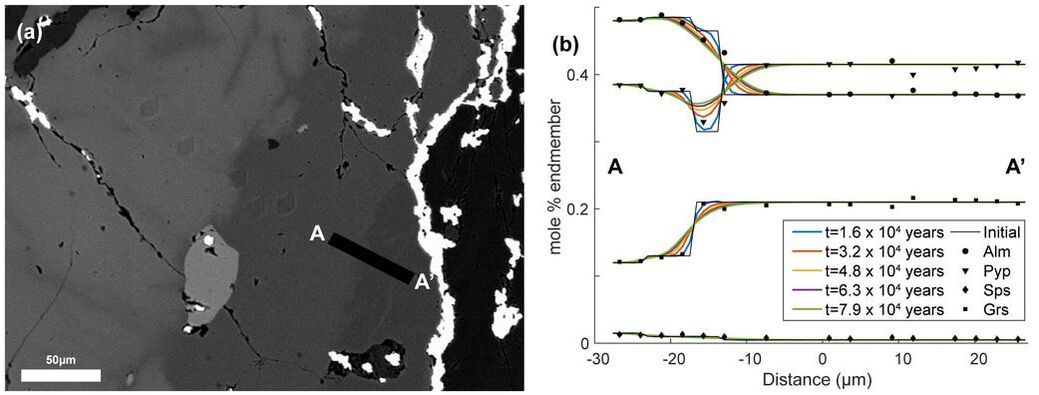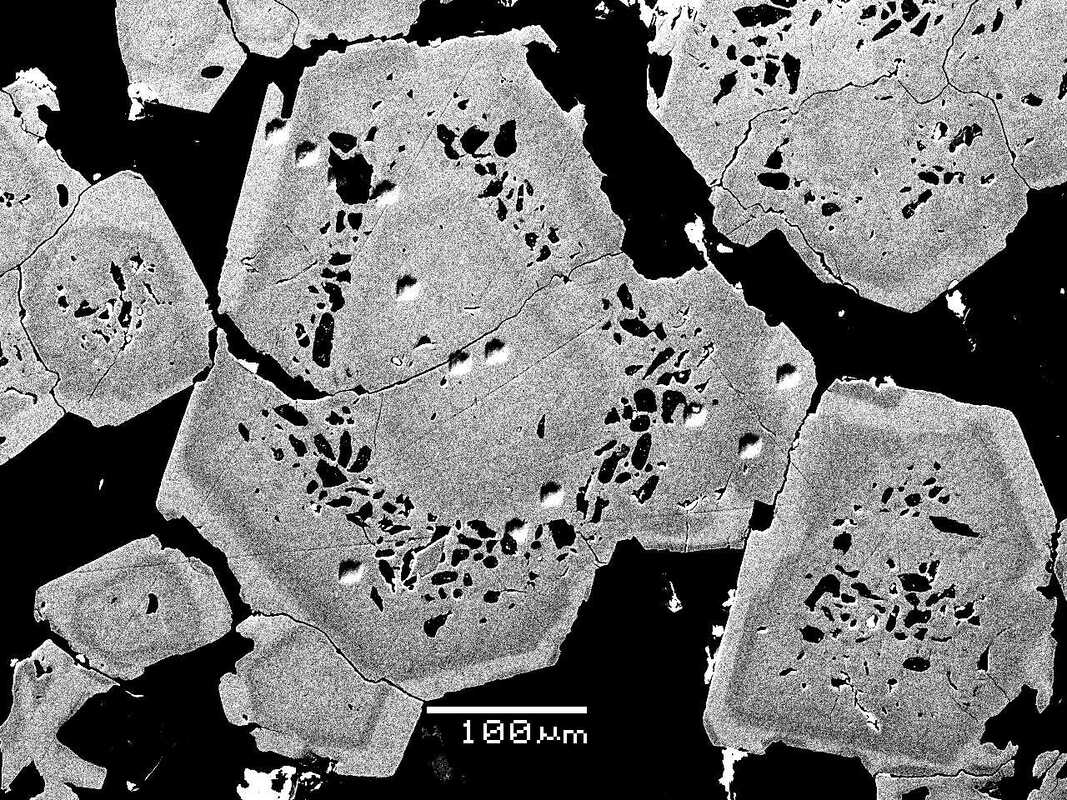My research focuses on the relationship between fluids and seismic hazards and the of behavior and transport of fluids in subduction zones. I investigate how fluid movement can be a cause and consequence of seismicity, how fluid-rock reaction can change rheology, , and the timescales of fluid transport and deformation. I combine structural, petrologic and geochemical methods applied to exhumed paleo-subduction terranes in the Alps, Southern California and beyond.
Fluids and seismicity
My postdoctoral research investigates the importance of talc-bearing metasomatic rocks in producing episodic tremor and slip (ETS) in subduction zones in collaboration with Drs. Cailey Condit and Fang-Zhen Teng. I am investigating a paleo-subduction interface on Pimu'nga (Santa Catalina Island, California) exhumed from pressure-temperature conditions of ETS in modern subduction zones. I have integrated field mapping with micro-scale imaging of mineral deformation and composition to show that talc-rich rocks hosted episodic slow slip events modulated by fluid pressure fluctuations (Hoover et al., 2022a). Ongoing research uses major and trace element, and Mg and Fe isotope geochemistry to trace the chemical evolution of these rocks (Easthouse et al., 2023), and geochronology and thermometry to constrain the timing of metasomatism (Hoover et al., in prep). Work by UW graduate student and mentee Peter Lindquist tackles the role of talc in modern slow slip through thermodynamic modeling of an active subduction zone (Lindquist et al., 2023). This interdisciplinary approach will inform geophysical, experimental, and geodynamic studies of ETS and our understanding of the subduction zone seismic cycle.
Check out my recent talk at Central Washington University on this topic
Check out my recent talk at Central Washington University on this topic
Subduction zone fluid transport
|
The transport of fluids within subduction zones is a key unknown in conceptual models of subduction zone processes. My works aims to constrain:
|
Timescales of fluid transport & deformation
|
A major challenge in connecting studies of the rock record to modern subduction processes in the drastic difference between the timescales of observation. Diffusion chronometry uses the time-dependent relaxation of chemical gradients in crystals and rocks to constrain timescales from seconds to billions of years.
I use diffusion chronometry to constrain the timescales of fluid movement and deformation in subduction zones to bring the temporal scale of geologic studies closer to that of geophysical observations of active subduction zones (Hoover et al., 2020a; 2021c). |
In situ geochemistry
|
Mineral zoning records a relative chronology of changing conditions experienced by a rock. In situ stable isotope measurements can access these individual zones and elucidate processes such as cyclic fluid transport and progressive deformation (e.g., Hoover et al., 2020a; 2022b). During my PhD, I developed a novel method for the measurement of lithium isotopes in the mineral garnet at the 20µm scale by secondary ion mass spectrometer for application to eclogite-facies subduction zone metamorphic rocks (Hoover et al., 2021a). My recently funded grant studying fluid-deformation feedbacks in the subducting slab will utilize in situ measurements of oxygen isotopes in epidote and clinozoisite in collaboration with Dr. Chloë Bonamici and the WiscSIMS lab to identify fluid sources and link them shear zone evolution.
|
I am currently working and living on unceded lands of the Coast Salish peoples that touch the shared waters of the Duwamish, Puyallup, Suquamish, Tulalip, and Muckleshoot. Much of my research has been carried out on lands of the Tongva, Diné, and Piscataway peoples. I respectfully and humbly thank the Coast Salish, Tongva, Diné, and Piscataway ancestors, elders, and citizens for their ongoing stewardship of these lands and affirm their sovereignty in the face of continued dispossession and settler-colonialism
